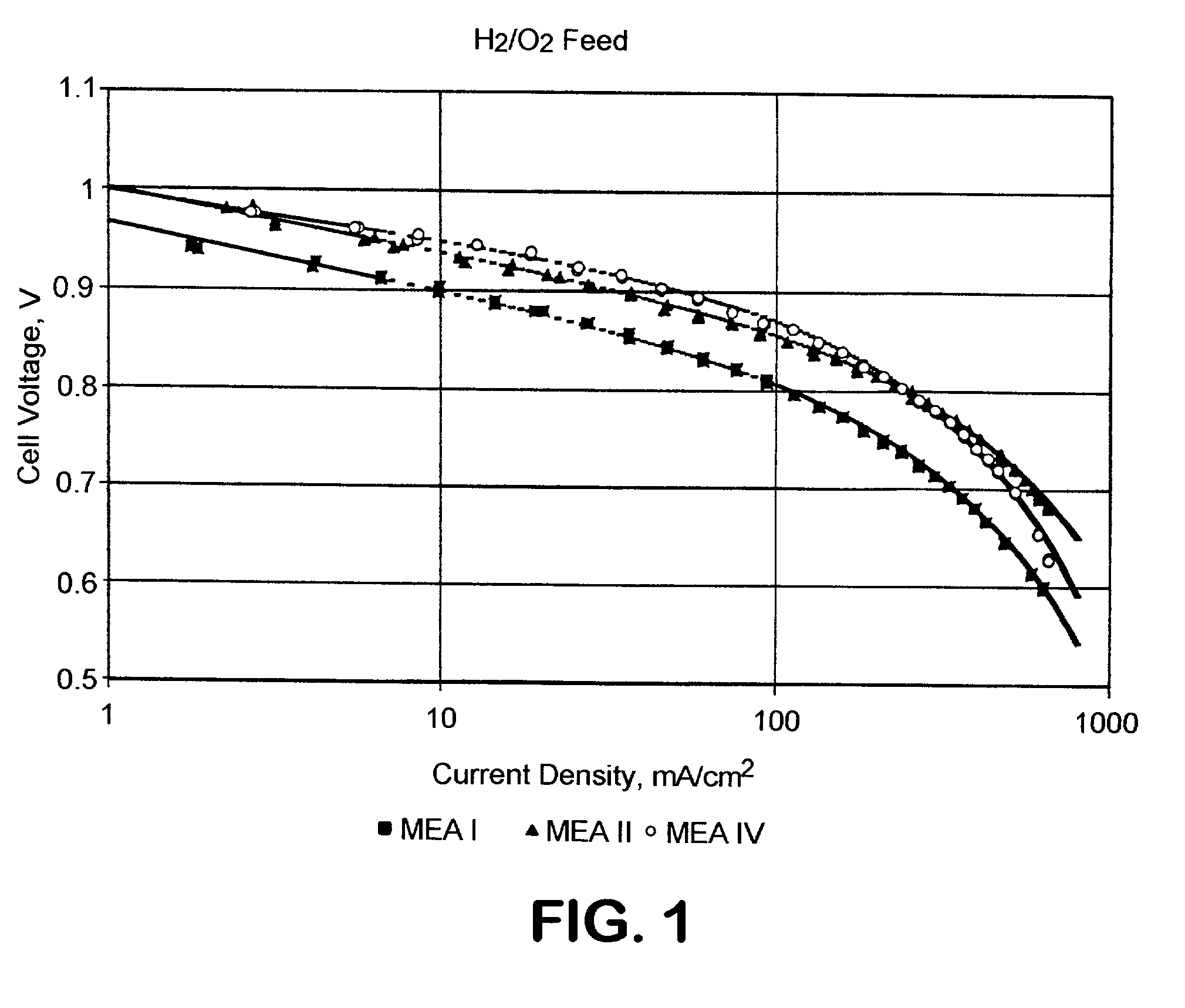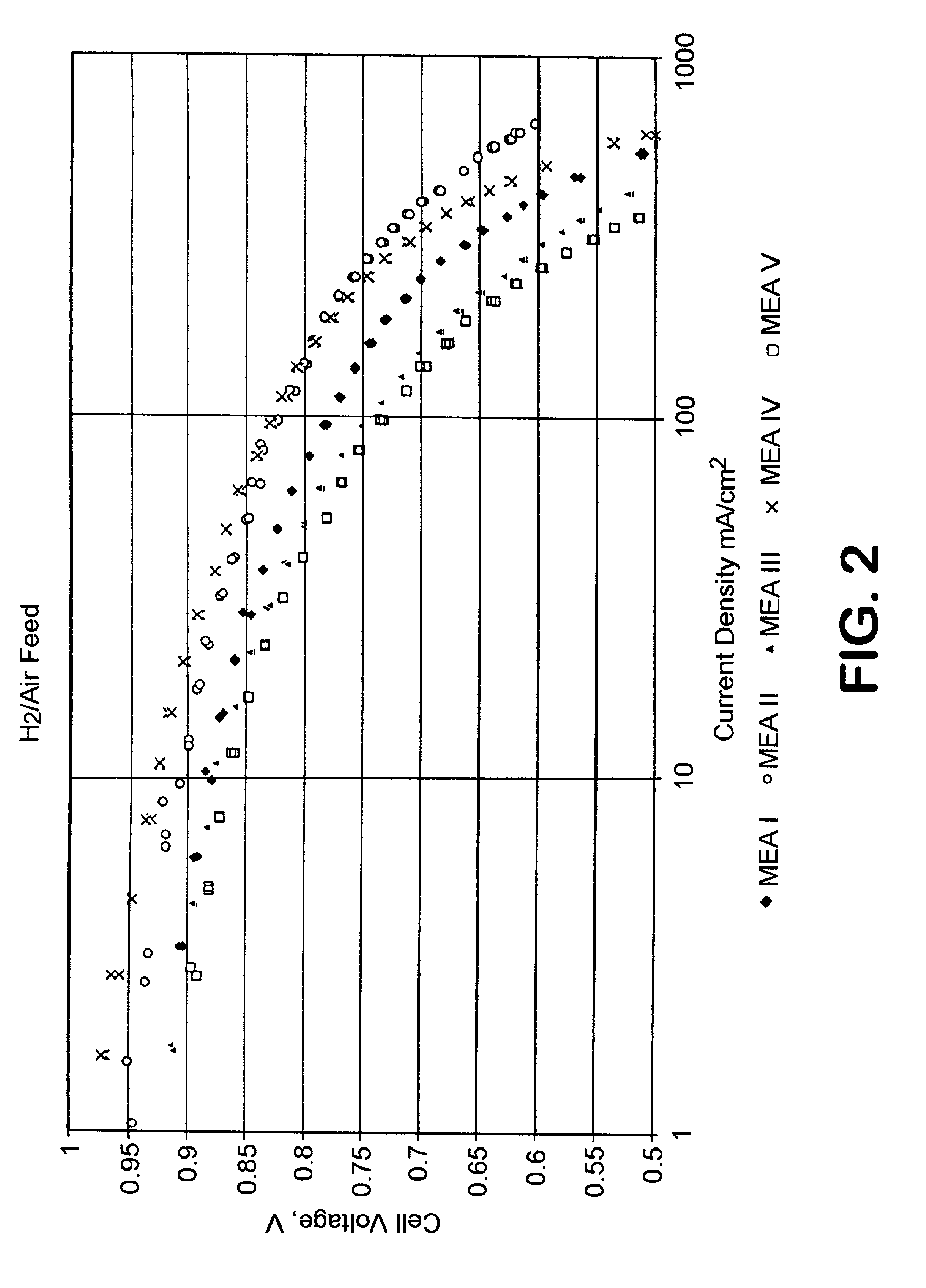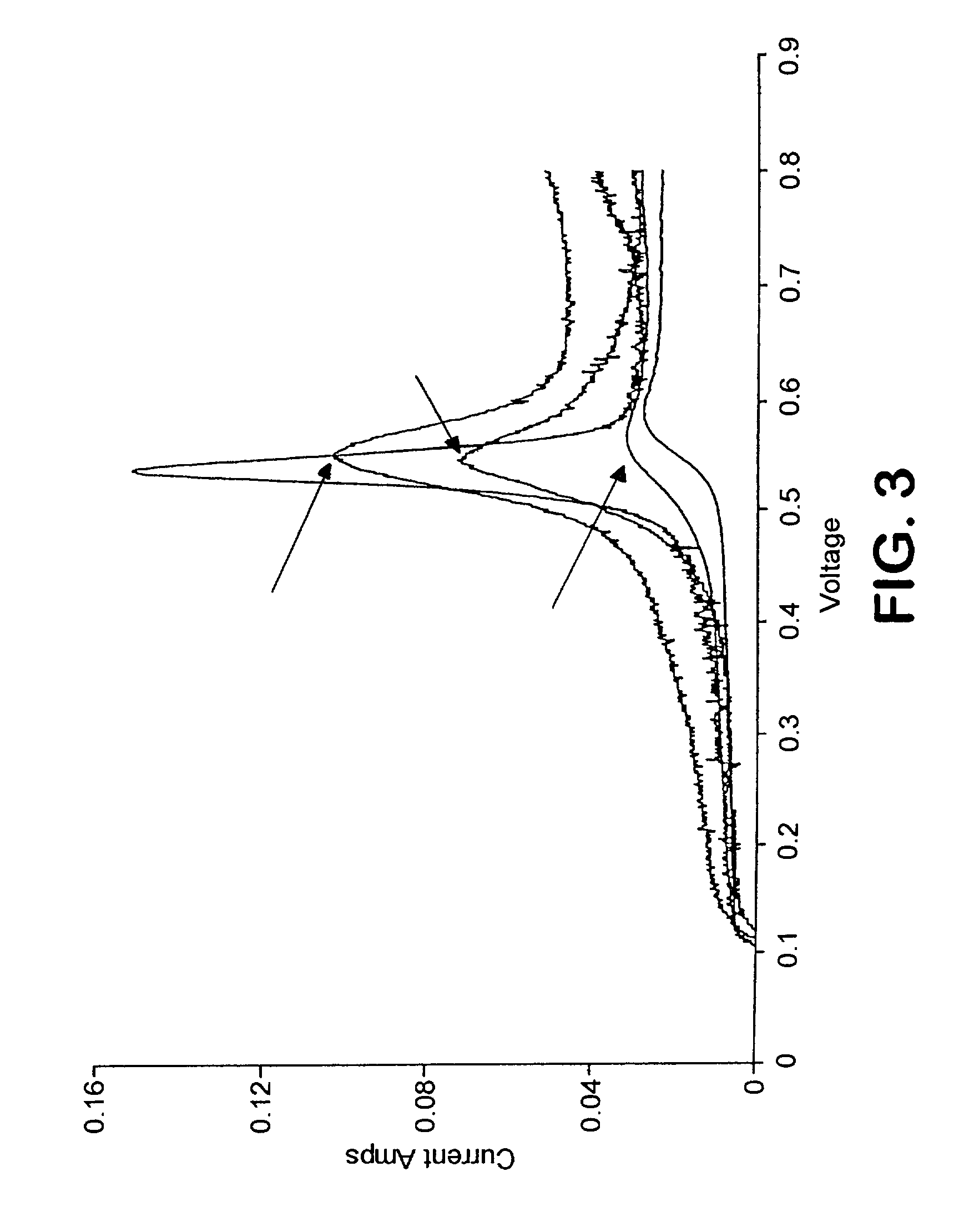Fuel cells and other products containing modified carbon products
a technology of carbon products and fuel cells, which is applied in the direction of cell components, metal/metal-oxide/metal-hydroxide catalysts, physical/chemical process catalysts, etc., can solve the problems of difficult creation of three-dimensional reaction zones on electrodes in contact with electrolyte, and achieve the reduction of catalyst efficiency, poor catalyst utilization, and electrode performance.
- Summary
- Abstract
- Description
- Claims
- Application Information
AI Technical Summary
Benefits of technology
Problems solved by technology
Method used
Image
Examples
example 1
[0092]Five membrane electrode assemblies (MEA's) were constructed. The reagents used were Pt black and 20 weight % Pt on VULCAN XC 72 carbon black (both from Alfa Aesar), Teflon PTFE 30 dispersion (DuPont) containing 60 weight % PTFE, hydrophobic Toray paper (Toray), Nafion 117 membrane (DuPont), Nafion solution, 5 weight % (Electrochem, Inc.) and Kynar 721 polyvinylidene fluoride powder (AtoFina). All MEA's were fabricated with a Nafion 117 membrane and an anode that consisted of 4.0 mg Pt black / cm2. Four MEA's were constructed using a standard procedure wherein the supported catalyst was bonded with PTFE. In these cases, a dispersion consisting of 90 parts of the supported Pt catalyst and 10 parts PTFE was mixed by sonification, flocculated by acidification to pH 3, and dried at 105° C. The powder was then deposited on the 2 hydrophobic Toray paper to form a catalyst layer containing 0.5 mg Pt / cm2. The catalyst layer was heated at 360° C. for 30 minutes to sinter the PTFE and bond...
example 2
[0137]BLACK PEARLS 2000 carbon black, 50 g, was diazotized with sulfanilic acid (about 25 g), resulting in the attachment of a high level of —C6H4SO3Na groups. The resulting dispersion was diafiltered to remove the reaction byproducts and then passed through a cation exchange column, in its hydrogen form, to replace the Na+ in the attached group with H+ (i.e., forming —C6H4SO3H groups). A solid product was obtained after drying the dispersion at 75° C. To an aqueous dispersion of the treated black (2 to 5 g), a solution of either [Pt(NH3)4](OH)2 or [Pt(NH3)4]Cl2 was added to achieve Pt loadings of either about 1 mmoles / g treated black or 0.65 mmoles / g treated black, respectively. The resulting products were dried at 75° C. Samples were then placed in a tube furnace, heated to a specified temperature (105, 120, and 140° C.) under N2 and then reduced in a stream of a mixture of H2 and N2 at differing H2:N2 molar ratios. The reduced products, using [Pt(NH3)4](OH)2 as the Pt source, wer...
example 3
[0149]CSX 619 carbon black, having a BET surface area of about 600 m2 / g, a t-area of about 400 m2 / g and a DBP of 100 cc / 100 g, was diazotized with sulfanilic acid. The resulting product, after diafiltration, ion exchange and drying, contained 0.9 mmoles / g of attached —C6H4SO3H groups. This treated carbon black was then dispersed in LLDPE in a 60 cc Brabender mixer to achieve a treated black loading of 40 weight %. Samples of the resulting product were than compressed at a pressure of 30,000 lb at a temperature of 150° C. to form membranes having a thickness of about 60 microns. A sample of the neat LLDPE was also compressed to form a membrane of comparable thickness (63 microns).
[0150]The treated black loaded LLDPE membrane was sandwiched between two hydrated Nafion 112 membranes and then bonded together by hot pressing at 140° C. at 5000 psi for about 2 minutes. The thickness of the membrane sandwich was measured to be 124 microns. A composite membrane, consisting of 4 layers of Na...
PUM
| Property | Measurement | Unit |
|---|---|---|
| thick | aaaaa | aaaaa |
| thickness | aaaaa | aaaaa |
| thickness | aaaaa | aaaaa |
Abstract
Description
Claims
Application Information
 Login to View More
Login to View More - R&D
- Intellectual Property
- Life Sciences
- Materials
- Tech Scout
- Unparalleled Data Quality
- Higher Quality Content
- 60% Fewer Hallucinations
Browse by: Latest US Patents, China's latest patents, Technical Efficacy Thesaurus, Application Domain, Technology Topic, Popular Technical Reports.
© 2025 PatSnap. All rights reserved.Legal|Privacy policy|Modern Slavery Act Transparency Statement|Sitemap|About US| Contact US: help@patsnap.com



